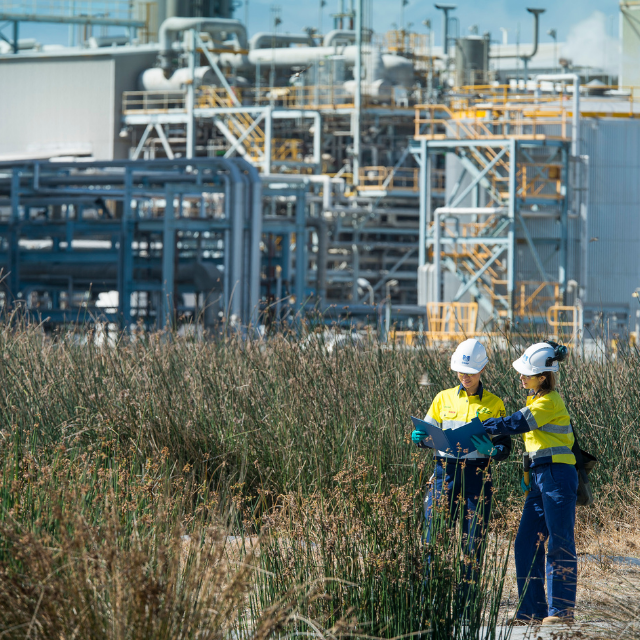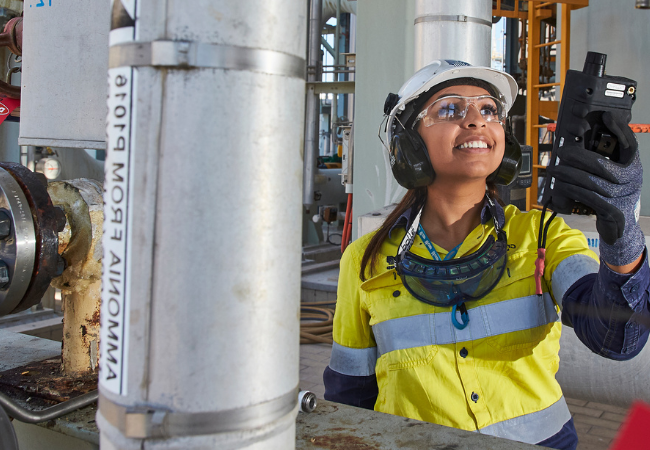WesCEF’s three-phase decarbonisation journey positions the business on a credible pathway to reduce its own emissions as well as emissions across its value chains.
The first phase commenced in late 2012 with the installation of abatement catalysts in several of its manufacturing plants. This investment in technology delivered a reduction in cumulative CO2e emissions of 5.5 million tonnes, approximately 40 per cent, by the end of 2020.1
The second and third phases feature a Net Zero Roadmap outlining how it will achieve net zero scope 1 and 2 emissions by 2050, and includes an interim emissions reduction target of 30 per cent, relative to a 2020 baseline by 2030.2
“We’ve had an aspiration to achieve net zero emissions by 2050 for some time. Now, with the amount of climate-inspired innovation in our sectors, that aspiration has become a viable target.”
WesCEF Managing Director, Aaron Hood.
WesCEF’s Net Zero Roadmap focuses on how the business will accelerate the decarbonisation of its existing operations and incorporate new technologies, like carbon capture utilisation and storage and green hydrogen, to reach net zero by 2050.3
With a focus on hard-to-abate emissions from both its production processes and electricity use, the Roadmap also recognises the importance of emissions reductions across WesCEF’s supply and customer value chains, with plans to develop a scope 3 reduction pathway.

WesCEF's three-phase decarbonisation journey: our roadmap to net zero
Building on our strong track record of sustainability and decarbonisation – our decarbonisation journey is a robust plan to get WesCEF to net zero by 2050.
Footnotes:
1 The first phase of WesCEF’s decarbonisation journey refers to the period FY2012-2020. During this time, WesCEF installed and maintained nitrous oxide abatement catalysts in its nitric acid plants. The nitrous oxide abatement catalyst reduces nitrous oxide by 80 per cent or more by converting nitrous oxide into inert nitrogen and oxygen gas. The catalyst is of pelleted configuration, which degrades over time and requires periodic replenishment to maintain optimal abatement. These catalysts delivered cumulative abatement of 5.5 million tonnes of CO2e from when they were installed in 2012 to the end of the first phase in 2020. All references to years are financial years: 2020 = FY2020.
2 Relative to an FY2020 baseline of ~955,000 tonnes CO2e, which incorporates the abatement already delivered. If it were not for this abatement the baseline would be ~1.7 million tonnes CO2e. The baseline also reflects the revision in the global warming potential of nitrous oxide from 298 times that of carbon dioxide to 265 times and the revision of the global warming potential of methane from 25 times that of carbon dioxide to 28 times. WesCEF’s baseline emissions will be updated in the event of significant portfolio changes, such as material changes to production volumes and mergers, acquisitions and divestments. It will also be updated to reflect changes in greenhouse gas emission reporting protocols. Should changes to the baseline be made, the 2030 interim reduction target may also change.
3 Green hydrogen refers to the production of hydrogen via the electrolysis of water powered by renewable electricity. WesCEF currently produces approximately 50,000 tonnes of hydrogen per annum via steam methane reforming, for use in its ammonia manufacture. WesCEF’s Net Zero 2050 target assumes that new abatement technologies will become commercially viable and operate at scale well before 2050 and that government policy will be supportive of climate change action.

